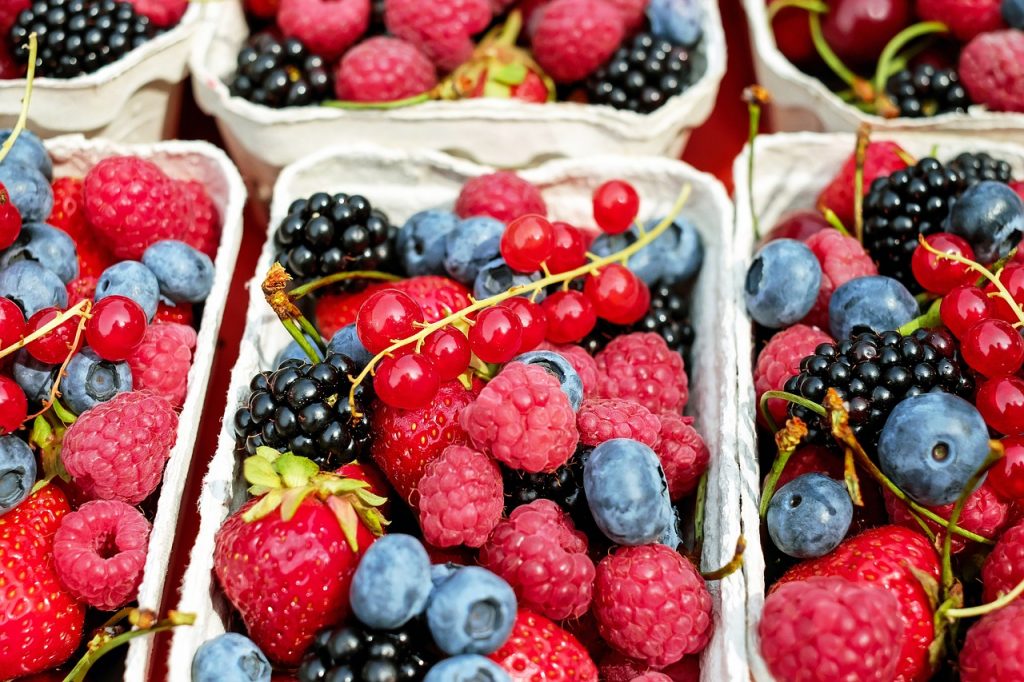“Phyto” refers to the Greek word for plant. Phytochemicals, sometimes referred to as phytonutrients, are compounds produced by the plant to aid in growth and defense against predators, bacteria and fungi, and environmental threats, such as UV light. Phytochemicals contribute to the health of the plant. When humans eat plant foods containing these phytochemicals, we see similar health effects.

Health Benefits
Phytochemicals provide health-promoting benefits. They have the potential to:
- Enhance immunity
- Cleanse the body of toxins
- Improve cognitive function
- Reduce inflammation
- Act as antioxidants
A high dietary intake of phytochemicals from vegetables, fruits, nuts, legumes, and whole grains is associated with a reduced risk of various chronic diseases, such as cancer, heart disease, and type 2 diabetes.
Types of Phytochemicals
Dietary phytochemicals are organized into different groups based on their chemical structure and characteristics. Phytochemicals categorized in the same group typically act in similar ways in the human body.
Different plant families have higher amounts of different phytochemicals. The table below provides some examples.
| Phytochemical | Plant family | Examples of food sources | Potential health effects |
|---|---|---|---|
| Glucosinolates | Brassicaceae | Cruciferous vegetables- broccoli, kale, Brussels sprouts, watercress | Cancer prevention, detoxification, improve heart health, antioxidant activity |
| Allicin | Allium | Onions, leeks, garlic | Antioxidant activity, improve heart health, anti-bacterial activity |
| Isoflavones and Phytosterols | Fabaceae | Legumes- soybeans, peas, beans, lentils | Reduce cholesterol levels, prostate and breast cancer prevention |
| Flavanones | Rutaceae | Citrus fruits- oranges, grapefruit, kumquat | Antioxidant activity, anti-inflammatory |
| Steroidal glycoalkaloids | Solanaceae | Potatoes, tomatoes, peppers, eggplant | Reduce cholesterol levels, cancer prevention, anti-bacterial, anti-viral |
Other phytochemicals are pigmented and can be found in plant foods of the same color. See table below for some examples.
| Phytochemical | Color | Examples of food sources | Potential health effects |
|---|---|---|---|
| Anthocyanin | Blue/purple | Blueberries, blackberries, red cabbage | Improve heart health, prevent cognitive decline, cancer prevention, improve insulin sensitivity |
| Lycopene | Red | Tomatoes, watermelon, pink grapefruit | Improve heart health, antioxidant activity, anti-inflammatory |
| Beta-carotene | Orange | Sweet potatoes, carrots, apricots | Promote eye health, antioxidant activity |
| Betalains | Red/yellow | Beets, Swiss chard, cactus fruit aka prickly pear | Antioxidant activity |
Variety is Key
Thousands of phytochemicals have been identified, but only a small portion of those have been studied in depth. Your best bet to maximize the health benefits of phytochemicals is to eat a variety of plant foods. Small amounts of many phytochemicals may benefit human health more than large amounts of few phytochemicals. Variety also allows for phytochemicals to work together.
For more tips about how to maximize the health benefits of phytochemicals see the handout on 10 Tips to Get the Most out of Your Fruits and Vegetables.


